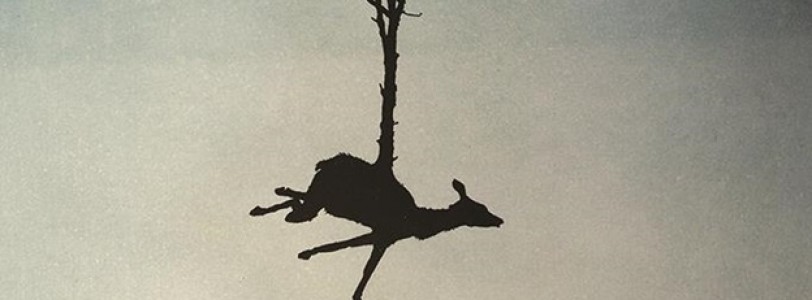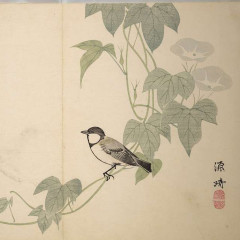On Thursday 13th of August, I journeyed into London to visit the British Library and to attend the exhibition of 'Animal Tales'; which explored how we view animals on the page and why authors use them. Although we went specifically to see that event, we also looked at two other exhibitions: ''The Treasures of the British Library' and 'Magna Carta: Law, Liberty, Legacy', the latter being extremely exciting.
'Animal Tales' was presented in 6 sections, the first being: 'The Call of the Wild'. This title was named after Jack London's hugely successful book. This area represented how the wild is still tempting to humans as it is an escape from the unnatural surroundings humans have built for themselves.
The second presentation was 'Animal Allegories'. It exhibited that allegorical power is very strong and by using animals, readers find it easier to understand the hidden meaning. A famous example of an animal allegory is author, George Orwell's Animal Farm. It is fairly simple to understand as Orwell wanted everyone to be aware of the threat of Communism in Russia. He did not use lots of highly sophisticated language so only the well-educated could read it. He chose to be allegorical and use the story of a rebellion led by pigs on a farm. But what made Orwell's story even more powerful is the fact that he used specific animals to portray certain roles in the revolution. For example, the horse, Boxer, is the working force behind the dictators. He follows the leaders because he thinks they are right and doesn't question them. Without him, the government would fail, but ultimately, as displayed in the book, when the workers cannot work or become too ill, they are treated without respect. A strong horse is the very symbol of strength and courage, but not of cleverness. Pigs are associated with cunningness and that is why Orwell chose them to be the dictators.
'Metamorphoses' was the next section, and was named after the epic Latin poem by the Roman poet Ovid. 'Metamorphoses' was all about the power of transformation. Since ancient times, the power of transformation between humans and animals has had a very weighty influence on our imaginations. The poem, Metamorphoses, being the object of this display, is all about myth, folktales and not only physical change but psychological transformation too. One example is the story of Apollo and Daphne. After being pursued by him for quite some time, Daphne prays for help to either the river god Peneus or to Gaia. She is then turned into a laurel to escape. The laurel became sacred to Apollo and was used as a wreath in the Pythian Games, in honour of the god Apollo. Even in today's literature transformation is exercised, like in J.K. Rowling's Harry Potter, for example, Sirius Black turns into a dog.
In ''Tales for Children', it tells us that since the 18th Century, stories about animals have been key in children's literature because it can teach them kindness and social duty. In A.A. Milne's Winnie-the-Pooh, Pooh Bear is described as naïve and slow-witted, which most children can relate to, but he is also kind, friendly and steadfast. Children can learn from these books as they can reflect on their own sense of vulnerability and can explore realms outside the adult's control.
The penultimate section was 'Traditional Tales', which were full of tales of bravery, hope, fear and courage from the earliest of times. Aesop's Fables and Anansi rely almost completely on oral traditions, which were then written down and made into books. Anansi is an African folktale of a spider who is the spirit of all knowledge of stories. Aesop's Fables are all about animals and morals, mostly being used for teaching children. One good example is 'The Boy Who Cried Wolf'. This story is extremely famous and is frequently told by parents to children to stop them lying.
'Looking at Animals' was the last section of the exhibition. Animals have always been in our literature, from medieval bestiaries to children's picture books. In the early use of using animals in tales, they were only for adults. They were filled with moral and religious symbolism. They offered an intriguing insight into ourselves and helped us to distinguish between us and beasts. By the Victorian era, animals invaded bookshops and had begun to find themselves on the shelves in children's nurseries. Great naturalists, such as Darwin, and scientists, like Freud, had scientifically proven the distinctions between animals and humans. Nonetheless, our natural instincts only lie partially hidden beneath our civilised disguise, this is why animals have never left our imaginations and therefore will always haunt our literature.
Each section of Animal Tales was presented in a formal way but inviting way, the books were laid out in a neat and tidy fashion, and there were information paragraphs for every book. There were three-dimensional trees and animals to give the wall life and texture. The lights were dim and the colours were earthy, which made it feel very homely. The atmosphere was great, but not in the usual way. Everyone was fascinated in what the exhibition had to offer them and it was quiet, as a library should be. By respecting people's will to learn, not one person disturbed another.
The second exhibition I visited was 'The Treasures of the British Library'. The treasures were held in the Sir John Riblat Gallery. The room was filled with some of the most important historical, musical, scientific, religious and literary works. As I am very interested in literature and my project is on creative writing, I went to the section on literature and found some amazing works. My favourites were the original manuscript of Jane Austen's last novel, Persuasion, and her very own writing desk! There were also the original manuscripts for Jane Eyre, by Charlotte Brontë, The Life and Adventures of Nicholas Nickleby, by Charles Dickens, Shakespeare's First Folio and a Sherlock Holmes manuscript. There were so many fantastic items; there were even the two earliest printed books in the world, being 'Diamond Sutra' and the Gutenberg Bible.
My final exhibition of the day was 'Magna Carta: Law, Liberty, Legacy'. It was on display at the British Library to celebrate its 800th anniversary and was a privilege to see as there are only four left, two of which belong to the British Library. The other two are held at Lincoln and Salisbury Cathedrals. The exhibition was presented in eight sections, from its origins in 1215 with 'King John: Rule and Rebellion', to 'Magna Carta in the Modern Age'. The presentation ended with revealing of one of the four surviving copies of the Magna Carta. Little knew the impact it would have on today's society or government or the significance it would have in today's world.
Overall, this was a thrilling experience and I would recommend it to anyone, whether they were interested in early British monarchs or simply children's picture books. It was a great day out and I would dearly love to go again.






0 Comments